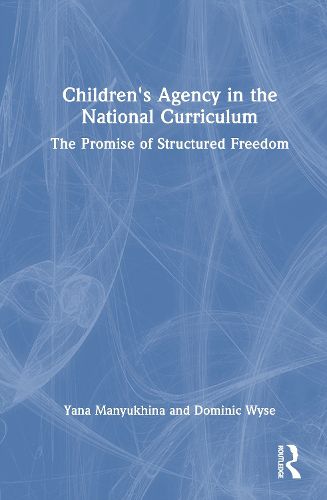Readings Newsletter
Become a Readings Member to make your shopping experience even easier.
Sign in or sign up for free!
You’re not far away from qualifying for FREE standard shipping within Australia
You’ve qualified for FREE standard shipping within Australia
The cart is loading…






How much say should children have in their own education? Through in-depth research in diverse primary schools, Manyukhina and Wyse explore how children's voices and choices shape their learning experiences - and why it matters. This ground-breaking text offers new insights into one of education's most pressing questions: how to balance children's agency with educational standards.
The 40-month research project that is at the heart of the book investigated how England's national curriculum, and other educational structures, affect children's agency. The authors report findings in three contrasting schools: an inner-city primary school; a suburban academy primary school, and an independent school. As a result of in-depth longitudinal research the book uncovers the details of how schools can enable or limit children's ability to shape their learning, from classroom choices and playground decisions to curriculum and school councils.
Children's Agency in the National Curriculum engages with England's national curriculum in the context of curriculum studies and curriculum development internationally. The new findings arise from research that is 'close-to-practice', ensuring that the implications of the work are relevant for children, teachers, and policy makers alike.
$9.00 standard shipping within Australia
FREE standard shipping within Australia for orders over $100.00
Express & International shipping calculated at checkout
How much say should children have in their own education? Through in-depth research in diverse primary schools, Manyukhina and Wyse explore how children's voices and choices shape their learning experiences - and why it matters. This ground-breaking text offers new insights into one of education's most pressing questions: how to balance children's agency with educational standards.
The 40-month research project that is at the heart of the book investigated how England's national curriculum, and other educational structures, affect children's agency. The authors report findings in three contrasting schools: an inner-city primary school; a suburban academy primary school, and an independent school. As a result of in-depth longitudinal research the book uncovers the details of how schools can enable or limit children's ability to shape their learning, from classroom choices and playground decisions to curriculum and school councils.
Children's Agency in the National Curriculum engages with England's national curriculum in the context of curriculum studies and curriculum development internationally. The new findings arise from research that is 'close-to-practice', ensuring that the implications of the work are relevant for children, teachers, and policy makers alike.